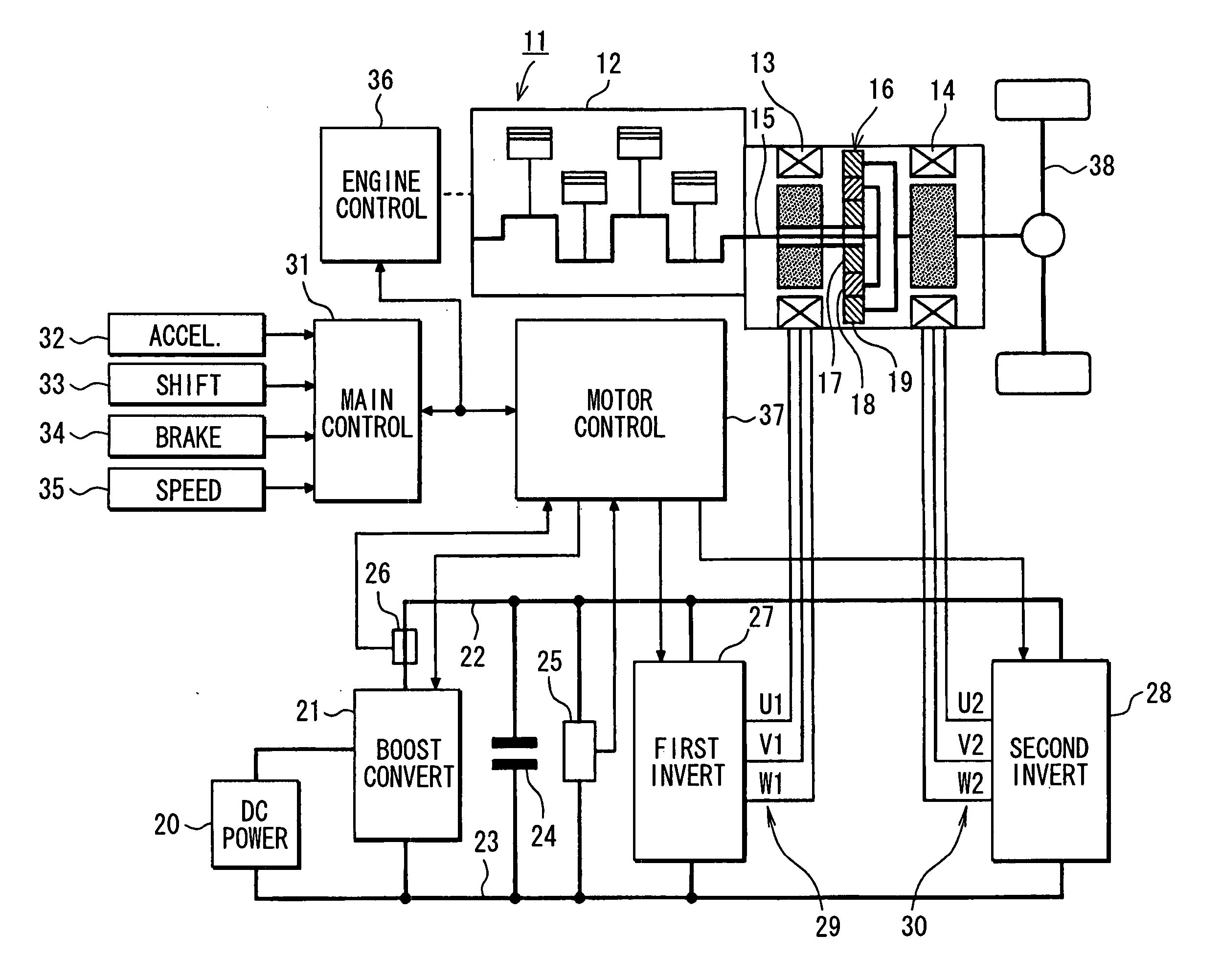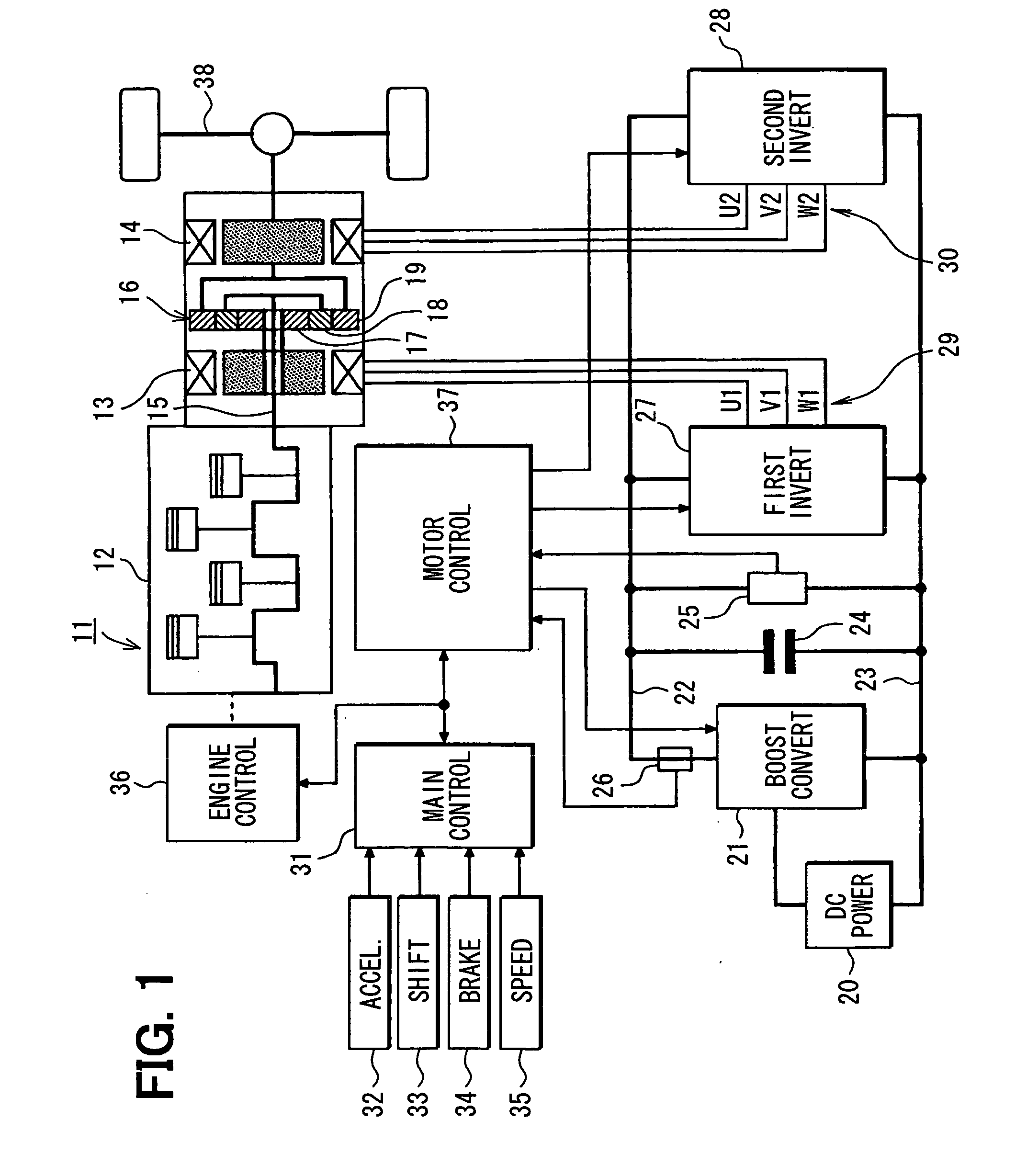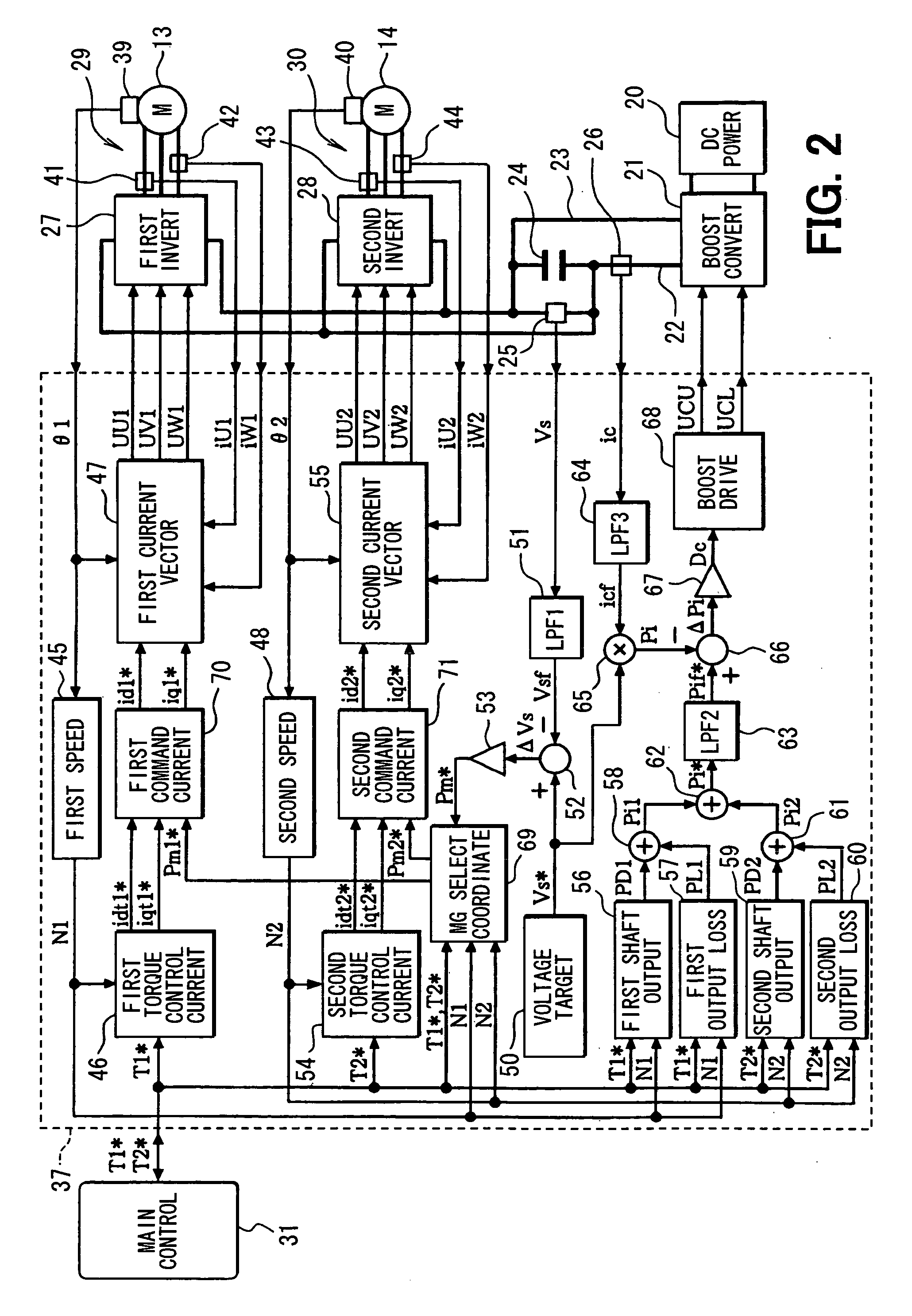Control apparatus for electric vehicles
a technology for controlling apparatus and electric vehicles, applied in the direction of electric devices, process and machine control, instruments, etc., can solve the problem that the system voltage cannot be stabilized sufficiently, and achieve the effect of suppressing system voltage variations
- Summary
- Abstract
- Description
- Claims
- Application Information
AI Technical Summary
Benefits of technology
Problems solved by technology
Method used
Image
Examples
first embodiment
[0034] Referring first to FIG. 1, an electric vehicle 11 has an internal combustion engine 12 in addition to a first AC motor 13 and a second AC motor 14. Thus, the electric vehicle 11 is an engine / motor hybrid vehicle. The engine 12 and the second AC motor 14 are employed as a drive power source for driving the electric vehicle 11. Power generated by a crankshaft 15 of the engine 12 is divided into two paths by a planetary gear set 16. The planetary gear set 16 includes a sun gear 17, a planetary gear 18 and a ring gear 19. The sun gear 17 rotates at the center. The planetary gear 18 rotates along a circumference external to the sun gear 17 while revolving around the center of its own. The ring gear 19 rotates along a circumference external to the planetary gear 18. The planetary gear 18 is linked to the crankshaft 15 of the engine 12 through a carrier not shown in the figure. On the other hand, the ring gear 19 is linked to a rotation shaft of the second AC motor 14. The sun gear ...
second embodiment
[0096] In the first embodiment, the first AC motor 13 and the second AC motor 14 are controlled by the sinusoidal PWM control method. In a second embodiment shown in FIG. 7, on the other hand, the first AC motor 13 is controlled by the sinusoidal PWM control method but the second AC motor 14 is controlled by a rectangular waveform control method.
[0097] In execution of torque control on the second AC motor 14, the motor control unit 37 generates three-phase voltage command signals UU2, UV2 and UW2 by the rectangular waveform control method on the basis of the torque command value T2* output by the main control unit 31, the U-phase current iU2 and W-phase current iW2 of the second AC motor 14 as well as the rotor rotational position θ2 of the second AC motor 14. The rectangular waveform control method adopted for the second AC motor 14 is a method of changing electrical conduction of the AC motor 14 every predetermined value of an electrical angle of the AC motor 14.
[0098] In contro...
third embodiment
[0111] In a third embodiment shown in FIG. 10, the motor control apparatus 37 executes conversion power control of controlling a conduction duty ratio Dc of a switching device (not shown) as a device in the voltage boosting converter 21 so as to reduce the difference ΔPi between a command value Pif* of a power, which is output by the voltage boosting converter 21 as a conversion power, and a detected value Pi of the conversion power.
[0112] A total power Pi* is supplied to the second low pass filter 63 serving as the second low frequency component passing means for carrying out the low pass filtering process to pass only components included in the total power Pi* as components each having a low frequency. A post-filtering total power Pif* is obtained as a result of the low pass filtering process. An adder 87 at a stage following the second low pass filter 63 adds a target output power operation quantity Pmc* to the post-filtering total power Pif* to result in the final command value...
PUM
 Login to View More
Login to View More Abstract
Description
Claims
Application Information
 Login to View More
Login to View More - R&D
- Intellectual Property
- Life Sciences
- Materials
- Tech Scout
- Unparalleled Data Quality
- Higher Quality Content
- 60% Fewer Hallucinations
Browse by: Latest US Patents, China's latest patents, Technical Efficacy Thesaurus, Application Domain, Technology Topic, Popular Technical Reports.
© 2025 PatSnap. All rights reserved.Legal|Privacy policy|Modern Slavery Act Transparency Statement|Sitemap|About US| Contact US: help@patsnap.com



